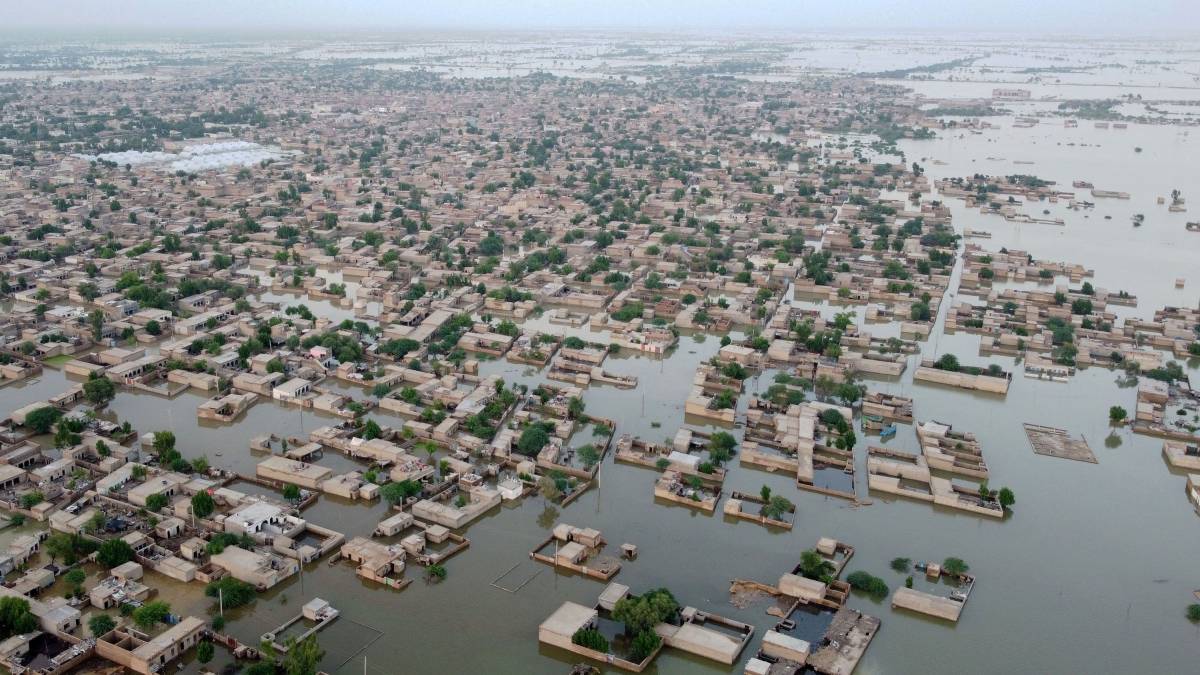By: Liaqat Asher
A combination of intense monsoon activity in both India and Pakistan has raised alarms across northern regions, with experts and authorities warning of serious flooding risks, glacial hazards, and potential infrastructural damage in the days ahead.
According to meteorological updates, Himachal Pradesh, a northern Indian state bordering Pakistan, is expected to receive moderate to heavy rainfall from August 4 to 9, with alerts already issued for the states of Himachal and Punjab. The Bhakra Beas Management Board (BBMB) has announced it will release excess water from the Pong Dam reservoir, following a sudden surge in water levels due to rainfall in the Beas catchment area and upstream releases from the Pandoh Dam.
This development holds direct implications for Pakistan, as the Beas River feeds into the Sutlej, a trans-boundary river system. Under existing arrangements, India notifies Pakistan 24 hours in advance of any major water release. The water typically takes around 12 hours to reach Pakistani territory, raising potential threats of riverine flooding in downstream areas.
Pakistan Braces for More Rains: NDMA Issues High Alert:
Meanwhile, Pakistan’s National Disaster Management Authority (NDMA) and the Pakistan Meteorological Department (PMD) have already been on high alert due to continued monsoon activity, which is forecast to persist through mid-September.
An alert issued by NDMA’s National Emergencies Operation Center (NEOC) highlights the heightened risk of flash floods, urban flooding, landslides, and Glacial Lake Outburst Floods (GLOFs), particularly in Punjab, Khyber Pakhtunkhwa (KP), and Gilgit-Baltistan (GB).
According to NEOC, weak monsoon currents have begun affecting upper and central Pakistan and are likely to intensify under the influence of a westerly wave. As a result, heavy rainfall is expected across several major cities and vulnerable zones.
Urban Flood Risk Zones:
Islamabad, Rawalpindi, Gujranwala, Lahore, Sialkot, Khushab, Narowal
Local water channels such as Bein, Basanter, and Deg Nullah are likely to swell, increasing the risk of localized inundation.
Khyber Pakhtunkhwa Flash Flood Hotspots:
Chitral, Dir, Swat, Kalam, Mansehra, Battagram, Abbottabad, Peshawar, Dera Ismail Khan
These areas face risks of flash floods, landslides, and power disruptions due to thunderstorms and strong winds.
Glacial Hazards in GB and KP:
In Gilgit-Baltistan and northern KP, authorities are on GLOF watch, as rising temperatures continue to melt glaciers. Combined with incoming rainfall, this could lead to dangerous glacial lake outburst floods in vulnerable areas such as: Badswat, Hinarchi, Tersat, Hundur, Darkut, Ishkomen, Shisper, Reshun, Brep, Booni, Sardar Gol, and Arkari
NDMA has warned that remote valleys may be cut off due to damage to roads, bridges, and power lines, placing already isolated communities at greater risk.
Why Is Pakistan More Vulnerable?
Experts say Pakistan’s geographical and climatic realities, coupled with environmental degradation, make it particularly susceptible to disasters stemming from heavy rainfall and glacial melt.
Key vulnerability factors include:
Heavy Monsoon Rains: With most rainfall concentrated between June and September, rivers and drainage systems are often overwhelmed.
Glacier-Fed River Systems: Rivers like the Indus, fed by Himalayan glaciers, swell rapidly from glacial melt and rainfall.
Deforestation: Hillside logging and land clearance result in boulder run-off, as seen in Babusar Top and Kohistan during July 2025.
Inadequate Drainage Systems: Major cities like Karachi and Lahore frequently flood due to clogged drains and poor storm water management.
Encroachments on Natural Waterways: Unregulated housing developments along Nullah Leh, Soan, Korang, and River Ravi have obstructed natural water flow, intensifying flood damage.
Overpopulation in Vulnerable Zones: Many live near riverbanks and canals due to fertile land, but lack disaster resilience or alternative shelter.
Climate Change Effects: Rising temperatures have accelerated glacial melting and made monsoon patterns more erratic and intense.
Experts emphasize that environmental hazards don’t respect political borders, and the interconnected river systems and shared climate vulnerabilities of India and Pakistan call for greater cooperation in disaster preparedness, water management, and climate resilience.
“Both countries face similar environmental threats due to shared geography and must take coordinated, tangible steps to address them,” an environmental expert stated. “Ignoring nature’s warnings will only escalate the loss of life and infrastructure on both sides.”
Public Advisory:
NDMA and PMD have urged residents, especially those in low-lying or glacial areas, to:
Stay alert to official weather updates
Avoid unnecessary travel during heavy rainfall
Prepare for possible evacuations where required
Avoid riverbanks, canals, and nullahs during rain forecasts
As monsoon rains continue, timely action and public awareness are essential to mitigate the potential devastation in the weeks ahead.


